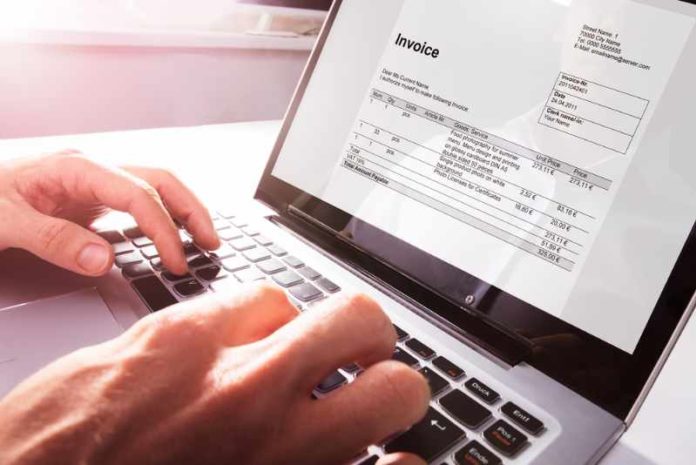As a small business owner, you likely love what you do, day in and day out. However, at the end of the day you have to have cash flow to keep your business up and running. An Intuit survey found that the average American small business owner is waiting for more than $5,000 in late payments. This is where sending out the right invoices come into play. Your invoice is a bill for your products or services sold. After you create the invoice, you send it off to receive payment and use it to keep track of customer transactions.
An invoice is an important part of every business transaction and helps keep your business going strong. Whether you chose to create an invoice online or in an app, these eight elements are vital to help you get paid.
1. A Strong Header
Label the invoice in clear text at the top of the paper and name it exactly what the document is. You don’t want your customer to be uncertain if the paper is an actual invoice. Include your logo in the header and ensure the invoice looks as professional as possible.
2. An Invoice Number or Identifier
Small business invoices must each contain their own invoice number or another unique identifier. This allows you to separate that particular invoice from every other invoice you send out. You could number them chronologically or chose a data-based purchase order – whatever works best for you.
A unique identifier is an effective way to help you receive timely compensation for the products or services you provided.
3. Your Business Information
It’s best to include the physical address, phone number, fax number and legal name of your business at the top of the invoice. Make sure all of your information is printed correctly. If the customer has any questions, having this information readily available makes it easy for them to contact your business.
4. The Date of the Transaction
Include the date of the transaction. This helps when you need to check and see when services were rendered, or products were sold. You never know when a customer may have an issue or there might be confusion about when something was sold. When you opt to include the date on the transaction, it allows you to look back and figure out those important details.
5. The Products or Services Sold
This information is what the invoice is all about. There is no certain way to present it, other than clearly so it’s simple to understand. Include the item that was sold or the service that was provided, the price and the quantity. There may be other details you chose to include but keep them all in this sold section, so the invoice doesn’t become confusing.
6. A Personalized Message
If you’re hoping to learn how to scale your business, think about how you can build relationships with your customers. One way to set your business apart from the competition is by designating a spot for personalized messages. This is where you can thank the customer and make a reference to some part of the project or interaction. Make your customer feel special!
7. Total Amount Due
This one is pretty obvious, but you have to include the total amount of money due on your invoice. This is a good reference point for you and your customer. Make sure it’s in bold and a little larger than the other text and highlighted or in a box. Do everything you can to eliminate any confusion, so the payment is made in a timely fashion.
8. The Due Date
The due date must appear on the invoice, so your customer knows when he needs to make the payment. Including the date will help keep the invoice history organized.
Cash flow is what allows a business to run, so make sure to send invoices that are easy for your customers to understand. Double check to ensure your business contact information is accurate and expect the payments for your products or services to roll in on time. Luckily, there are many services and free invoice templates out there designed to keep you organized and increase sales. I’ve spent quite a bit of time reviewing various options available and have always used these invoice templates for my small business invoice needs. They offer three very clean, organized and effective templates that encompass everything mentioned in this article for general purposes as well as more detailed layouts for specific needs.
Megan Totka is the Chief Editor for ChamberofCommerce.com. ChamberofCommerce.com helps small businesses grow their business on the web and facilitates connectivity between local businesses and more than 7,000 Chambers of Commerce worldwide. She specializes on the topic of small business tips and resources and business news. Megan has several years of experience on the topics of small business marketing, copywriting, SEO, online conversions and social media. Megan spends much of her time establishing new relationships for ChamberofCommerce.com, publishing weekly newsletters educating small business on the importance of web presence, and contributing to a number of publications. Megan can be reached at megantotka@gmail.com Website: www.chamberofcommerce.com.
Invoice stock photo by Andrey_Popov/Shutterstock







